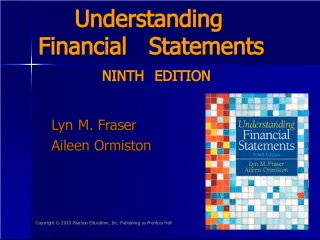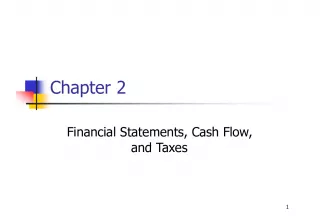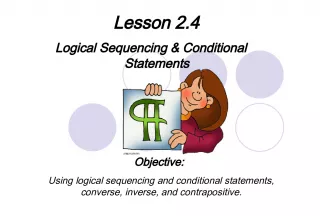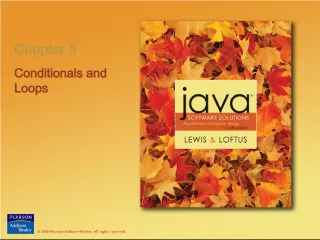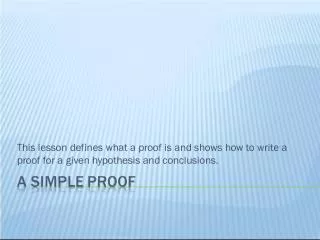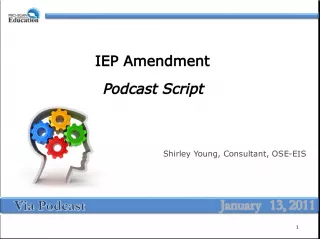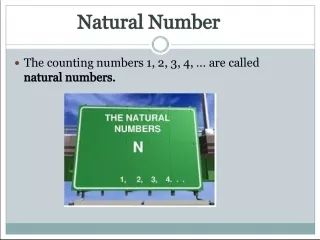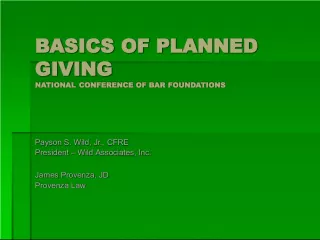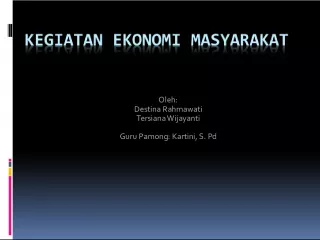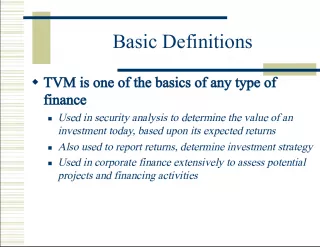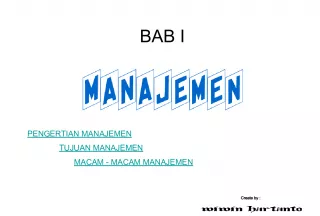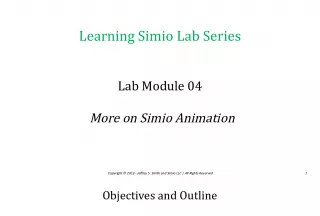Statements, Connectives, and Quantifiers: Understanding the Basics
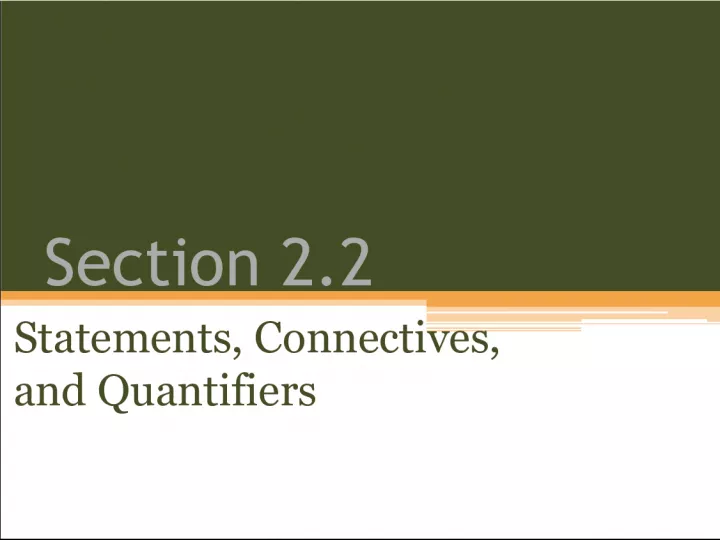

In this section, you will learn how to identify and symbolize statements, form their negations, use connectives to join ideas, and express quantified statements in multiple ways.
- Uploaded on | 5 Views
-
 ellis
ellis
About Statements, Connectives, and Quantifiers: Understanding the Basics
PowerPoint presentation about 'Statements, Connectives, and Quantifiers: Understanding the Basics'. This presentation describes the topic on In this section, you will learn how to identify and symbolize statements, form their negations, use connectives to join ideas, and express quantified statements in multiple ways.. The key topics included in this slideshow are statement, simple statement, compound statement, connectives, negation, quantified statement,. Download this presentation absolutely free.
Presentation Transcript
1. Section 2.2 Statements, Connectives, and Quantifiers
2. Objectives 1. Identify English sentences that are statements. 2. Express statements using symbols. 3. Form the negation of a statement. 4. Express negations using symbols. 5. Translate a negation represented by symbols into English. 6. Express quantified statements in two ways. 7. Write negations of quantified statements.
3. Key Terms: Statement: a sentence that is either true/false, but not both; symbolized by lowercase letters such as: p, q, r, and s. Simple Statement: contains a single idea. Compound Statement: contains several ideas combined together. Connectives: the words used to join the ideas of a compound statement. Connectives: not, and, or, ifthen, if and only if Negation: a statement that has a meaning that is opposite its original meaning, symbolized by ~p. ~p: read as not p
4. Example 1: Determine if the sentence is a statement. As a young and struggling artist, Pablo Picasso kept warm by burning his own paintings.
5. Example 2: Determine if the sentence is a statement. Dont try to study on a Friday night.
6. Example 3: Determine if the sentence is a statement. Is the unexamined life worth living?
7. Example 4: Identify each statement as a simple or compound. If compound, then identify the connective used. Laura is satisfied with her performance in the musical.
8. Example 5: Identify each statement as a simple or compound. If compound, then identify the connective used. If Hillary supports environmental issues, she will succeed in politics.
9. Example 6: Identify each statement as a simple or compound. If compound, then identify the connective used. I will sell my old computer and buy a new computer.
10. Example 7: Form the negation. It is raining.
11. Example 8: Form the negation. The Dallas Cowboys are not the team with the most Super Bowl wins.
12. Example 9: Let p, q, r, and s represent the following statements: p: One works hard. q: One succeeds. r: The temperature outside is not freezing. s: It is not true that the heater is working. Express the following statement symbolically. One does not work hard.
13. Example 10: Let p, q, r, and s represent the following statements: p: One works hard. q: One succeeds. r: The temperature outside is not freezing. s: It is not true that the heater is working. Express the following statement symbolically. The temperature outside is freezing.
14. Example 11: Let p, q, r, and s represent the following statements: p: Listening to classical music makes infants smarter. q: Subliminal advertising makes you buy things. r: Sigmund Freuds father was not 20 years older than his mother. Represent each symbolic statement in words. ~p
15. Example 12: Let p, q, r, and s represent the following statements: p: Listening to classical music makes infants smarter. q: Subliminal advertising makes you buy things. r: Sigmund Freuds father was not 20 years older than his mother. Represent each symbolic statement in words. ~r
16. Section 2.2 Assignments TB pg. 85/1 20 All Must write problems and show ALL work to receive credit for the assignment.
17. Key Terms Quantified Statements statements containing the words all, some, and no (or none). Universal Quantifiers words such as all and every that state that all objects of a certain type satisfy a given property, symbolized by . Existential Quantifiers words such as some, there exists, and there is at least one that state that there are one or more objects that satisfy a given property, symbolized by .
18. Negating Statements w/ Quantifiers The phrase Not all are has the same meaning as Some are not . The phrase Not some are has the same meaning as All are not .
19. Example 13: Quantifiers Rewrite the quantified statement in an alternative way and then negate it. All citizens over age eighteen have the right to vote.
20. Example 14: Quantifiers Rewrite the quantified statement in an alternative way and then negate it. Some computers have a two-year warranty
21. Key Terms Conjunction expresses the idea of and , symbolized by . Disjunction conveys the notion of or , symbolized by . Conditional expresses the notion of ifthen , symbolized by . Biconditional represents the idea of if and only if , symbolized by .
22. Key Terms Dominance of Connectives symbolic connectives are categorized from least dominant to most dominant. Least dominant Negation Conjunction/Disjunction Conditional Most dominant Biconditional
23. Using the Dominance of Connectives Statement Most Dominant Connective Highlighted in Red Statements Meaning Clarified with Grouping Symbols Type of Statement p q ~r p q ~r p (q ~r) Conditional p q ~r p q ~r (p q) ~r Conditional p q r p q r p (q r) Biconditional p q r p q r (p q) r Biconditional p q r ** and have the same level of dominance The meaning is ambiguous ? **Grouping symbols must be given with this statement to determine if it is a disjunction or a conjunction.
24. Example 15: Let r , t , and s represent the following statements: r : The Republicans will control Congress. s : Social programs will be increased. t : Taxes will be cut. The Republicans will control Congress or social programs will not be increased.
25. Example 16: Let r , t , and s represent the following statements: r : The Republicans will control Congress. s : Social programs will be increased. t : Taxes will be cut. If the Republicans do not control Congress and taxes are cut, then social programs will not be increased.
26. Example 17: Let r , t , and s represent the following statements: r : The Republicans will control Congress. s : Social programs will be increased. t : Taxes will be cut. Social programs will not be increased if and only if taxes are cut.
27. Example 18: Let s , t , and w represent the following statements: s : The sunroof is extra. t : The radial tires are included. w : Power windows are optional. t (~s)
28. Example 19: Let s , t , and w represent the following statements: s : The sunroof is extra. t : The radial tires are included. w : Power windows are optional. ~(s t)
29. Example 20: Let s , t , and w represent the following statements: s : The sunroof is extra. t : The radial tires are included. w : Power windows are optional. t (s ~w)
30. Section 2.2 Assignment II Classwork: TB pg. 86/21 32 All Remember you must write the problems and show ALL work to receive credit for this assignment.
